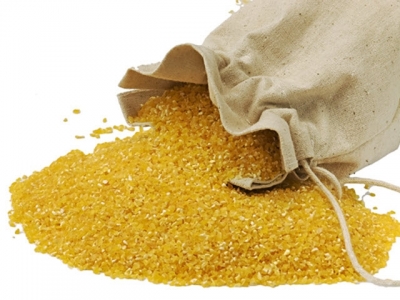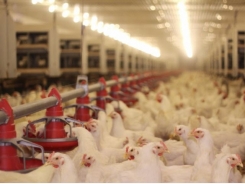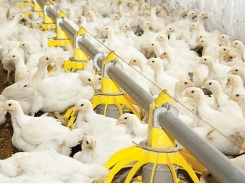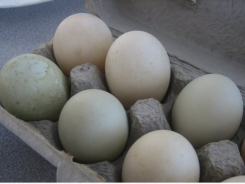Using maize gluten as an alternative protein source for poultry, pig feeds

Maize gluten protein can replace part of soybean meal in diets, but like all ingredients, it has its positive and negative aspects that require attention during feed formulation.
Photo: Nikanovak I Dreamstime.com | Due to low energy content, maize gluten feed is best avoided in diets for piglets and young birds.
The maize starch industry is a large global business that processes huge amounts of maize each year. Maize starch is a widely used ingredient in many food and industrial applications, and it is one of the most important raw materials of the soft drink industry, as it is used for the production of high-fructose syrup.
Starch is extracted by a process that involves steeping or soaking maize kernels and then separating the germ, hull and endosperm. From the endosperm, gluten proteins are then removed, leaving pure starch. The gluten part is then sold alone or in combination with any of the above co-products, but usually it is only blended with hulls as the germ has a higher value (as it is used for extraction of oil).
Maize gluten products
There are basically three maize gluten products available in the market today:
- Maize gluten meal with 60 percent crude protein containing no hulls
- Maize gluten meal with 40 percent protein containing about half of hulls produced
- Maize gluten feed with 20 percent protein containing all hulls from the starch production process
Although in the past it was only maize gluten meal (of either 60 or 40 percent protein content) that was of most interest to include in diets for pigs and poultry, today even the lower-protein product is priced favorably due to the high prices experienced in the cereal and soybean markets.
Nutrient profile
As indicated, the protein content depends on the product specifications as sold in the market. The protein quality, however, is of more interest as it is not much different than the parent ingredient, maize. In this respect, maize gluten protein remains deficient in lysine and tryptophan, and as such, high levels of inclusion in the diet will require strong fortification with these amino acids in crystalline form. Certainly this is going to limit its inclusion in all-maize cereal-based diets.
Also, as maize gluten feed contains hulls, it is high in crude fiber, reaching up to 8 percent. Although this is not extremely high compared to other ingredients, it still is of concern when this ingredient is used in conjunction with other fibrous ingredients. On the other side, it can be of benefit in diets for gestating sows that actually benefit from a higher crude fiber concentration or for slowing down growth in broilers or rearing pullets. Maize gluten meal at 60 percent crude protein contains about 1 percent crude fiber and, as such, this issue is not limiting its usage.
Certainly, the concentration of fiber has a negative effect on energy content, and this is true for every ingredient. Thus, maize gluten feed contains about 6.8 MJ/kg net energy (for pigs), whereas maize gluten meal with 60 percent crude protein contains 11.5 MJ/kg net energy—a considerable difference! For poultry, gluten feed and meal contain 7.5 and 14.9 MJ/Kg metabolizable energy for broilers, respectively.
Maize gluten products are poor in calcium and phosphorus, but rich in choline, and this last aspect could mean that lower choline additions can be afforded in diets rich in maize gluten products.
Inclusion rates
Due to low energy content, maize gluten feed is best avoided in diets for piglets and young birds; basically, in any type of starter feed. On the other hand, assuming diets are properly balanced for all amino acids, including valine and isoleucine, maize gluten meal at 60 percent crude protein is best kept below 5 percent in such starter diets, although levels up to 10 percent are not uncommon.
Older pigs and sows can consume diets containing up to 20 percent maize gluten meal, but less maize gluten feed (to the point where diets are balanced for energy and amino acids and crude fiber maximum limits are not exceeded). In contrast, 10 percent maize gluten meal is considered optimal for poultry diets, although, again, higher levels are not uncommon, but rarely more than 15 percent.
Of course, these are general, conservative numbers. Under proper nutritional guidance, up to 30 percent or even more maize gluten meal/feed can be used in certain diets. Indeed, a study conducted at the University of Kentucky indicated that up to 80 percent maize gluten feed can be used in diets for gestating sows without any problems (see Table 1).
Sows fed a diet consisting of 80 percent maize gluten feed did nearly as well as the control group in a University of Kentucky study.
Quality issues
Maize gluten is rich in yellow pigments. It contains about 275 mg/kg xanthophylls, whereas whole maize grain contains only 20 mg/kg. In comparison, alfalfa and marigold petals contain 175 and 7000 mg/kg. As expected, maize gluten meal has a rich yellow-golden color. Adding more than 10 percent in diets will visibly increase pigmentation of egg yolks, skin and carcass fat. This can be beneficial in certain markets, but not so in others, and especially when it comes to poultry products.
Maize gluten meal, as an ingredient, has a rich golden color. A brownish coloration indicates an over-cooked product, which has limited nutritional value, and thus, it should be avoided. Gluten meal is a free-flowing powder, often a bit dusty, with a very pleasant aroma. Gluten feed is brownish, more coarse, but with an equally pleasant aroma.
Feed intake issues
Pigs and poultry will readily consume diets based on gluten meal, but they may object to high levels of gluten feed. In fact, many nutritionists consider gluten meal to be an appetizer when used in limited amounts. Any experiences with depressed feed intake in high-gluten diets are probably due to dustiness or physical quality of the product and not any inherent issues with this ingredient. The levels recommended above assume product of good quality. Also, as always, it is more likely to have feed refusals (with any novel ingredient) when animals are offered diets high in these ingredients without a period of adjustment. Thus, it is recommended to gradually increase the inclusion levels where feed refusal is of a problem. Finally, these problems are more likely to occur in younger animals.
Conclusions
Maize gluten as a meal or feed is a viable alternative to more traditional protein sources, especially soybeans. A conservative inclusion level of 10 percent is not likely to produce any problems with feeds for pigs and poultry. In fact, the high concentration of yellow pigments in maize gluten can be a desirable trait for poultry, especially when a higher degree of pigmentation is required for egg yolks and broiler skin. Depending on prices, maize gluten can offer considerable feed cost savings
Related news
Tools

Phối trộn thức ăn chăn nuôi

Pha dung dịch thủy canh

Định mức cho tôm ăn

Phối trộn phân bón NPK

Xác định tỷ lệ tôm sống

Chuyển đổi đơn vị phân bón

Xác định công suất sục khí

Chuyển đổi đơn vị tôm

Tính diện tích nhà kính

Tính thể tích ao




 Smartphone app to let farmers test for poultry…
Smartphone app to let farmers test for poultry…  Everything You Need to Know About Duck Eggs
Everything You Need to Know About Duck Eggs